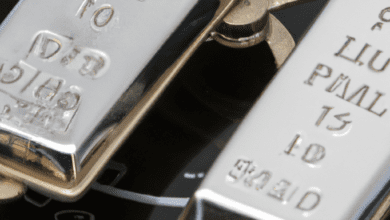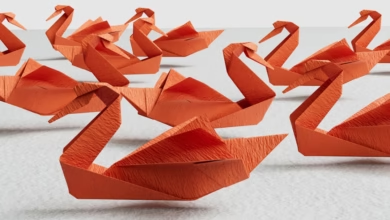Exploring Jewelry Metals: Gold, Silver, and Platinum in Crafting and Investing for the Modern Market

In the world of jewelry crafting, the choice of metals plays a pivotal role in defining not only the aesthetic appeal but also the durability and value of each piece. This article delves into the fascinating realm of jewelry metals, focusing on the three most revered options: gold, silver, and platinum. As we explore these precious metals, we will also touch upon the significance of non-ferrous metals and their contributions to the industry. From understanding the various properties of these metals to analyzing current metal trends, including sustainable metal production and metal recycling efforts, this discussion will provide a comprehensive overview.
We will also examine the investment potential of jewelry metals, guiding you through the intricacies of gold investing, silver investing, and the dynamics of platinum in the modern market. Whether you’re a jewelry enthusiast, a potential investor, or simply curious about metallurgy and metal fabrication, this article aims to illuminate the diverse world of jewelry metals and their impact on design and investment strategies. Join us as we navigate through the evolving landscape of metal commodities, highlighting the importance of responsible sourcing and innovative practices in crafting exquisite jewelry.
- 1. Understanding Jewelry Metals: The Role of Precious and Non-Ferrous Metals in Crafting
- 2. The Impact of Metal Trends on Jewelry Design: From Gold and Silver to Sustainable Metal Production
- 3. Investing in Jewelry Metals: A Guide to Gold, Silver, and Platinum in the Modern Market
1. Understanding Jewelry Metals: The Role of Precious and Non-Ferrous Metals in Crafting
Jewelry crafting heavily relies on various metals, both precious and non-ferrous, to create stunning pieces that appeal to consumers. Understanding the role of these metals is essential for both artisans and buyers in the jewelry market.
Precious metals like gold, silver, and platinum are known for their rarity and intrinsic value. These metals are coveted not only for their aesthetic appeal but also for their durability and resistance to metal corrosion. Gold investing and silver investing have become popular among consumers looking to diversify their portfolios, making these metals more than just decorative items.
In contrast, non-ferrous metals, which include aluminum, copper, and zinc, are increasingly being utilized in jewelry-making due to their lightweight nature and versatility. These base metals can be alloyed with precious metals to enhance their strength and create unique designs. For instance, metal alloys that combine copper with gold can result in rose gold, a trending choice in modern jewelry.
Additionally, the jewelry industry is experiencing a shift toward sustainable metal production. This involves recycling precious and industrial metals to reduce environmental impact and promote responsible sourcing. Metal recycling not only helps in conserving resources but also aligns with the growing consumer demand for ethical practices in the jewelry sector.
Furthermore, advancements in metallurgy and technology, such as 3D printing metals, have revolutionized jewelry fabrication. This innovative approach allows for intricate designs that were previously impossible to achieve, showcasing the evolving trends in the jewelry market.
While precious metals dominate the luxury segment, other metals such as platinum and palladium are also gaining traction. These refractory metals are prized for their strength and resistance to wear, making them ideal for high-end jewelry.
Overall, understanding the diverse range of jewelry metals—from precious to non-ferrous—highlights their significance in crafting beautiful and durable pieces. As the market evolves, staying informed about metal trends and sustainable practices will be crucial for both consumers and jewelry makers alike.
2. The Impact of Metal Trends on Jewelry Design: From Gold and Silver to Sustainable Metal Production
The jewelry industry has witnessed significant shifts in design and production due to evolving metal trends and consumer preferences. Precious metals like gold, silver, and platinum traditionally dominated this sector, but the increasing awareness of sustainability is reshaping the landscape. As consumers become more environmentally conscious, there is a growing demand for sustainable metal production practices that minimize the environmental impact of metal mining and metal fabrication.
Metal recycling has gained traction as a viable alternative to traditional mining methods. By repurposing existing metals, jewelers can reduce their reliance on newly mined resources and lower their carbon footprint. This approach not only supports sustainability but also allows for the use of unique metal alloys that can add distinct characteristics to jewelry pieces.
Furthermore, the rise of non-ferrous metals such as aluminum and copper, along with base metals like zinc, is influencing jewelry design by introducing innovative textures and colors. Designers are increasingly experimenting with 3D printing metals, which enables the creation of intricate designs that were previously unattainable with traditional techniques. This technology is not only cost-effective but also promotes material efficiency, further supporting sustainable practices within the industry.
In addition, the integration of rare earth metals and battery metals into jewelry design is an emerging trend that reflects the intersection of fashion and technology. As industries like aerospace and automotive continue to innovate, the demand for these specialized metals impacts jewelry designers who seek to incorporate modern elements into their creations.
The impact of these metal trends is multifaceted, encouraging designers to explore new materials while also considering the ethical implications of their choices. As gold investing and silver investing remain popular, the market is witnessing a shift toward transparency in sourcing and a preference for sustainable options. Ultimately, the evolution of jewelry metals, driven by consumer demand and technological advancements, is paving the way for a more sustainable and innovative future in jewelry design.
3. Investing in Jewelry Metals: A Guide to Gold, Silver, and Platinum in the Modern Market
Investing in jewelry metals has gained significant attention in the modern market, especially as consumers become more aware of the value and sustainability of these precious materials. Gold, silver, and platinum are not only fundamental in crafting exquisite jewelry but also serve as smart investment options. Understanding the dynamics of these metals can pave the way for informed decisions in both personal jewelry purchases and broader investment strategies.
Gold investing remains one of the most sought-after strategies among investors, given its historical role as a safe haven during economic uncertainty. The allure of gold lies in its rarity and intrinsic value, making it a popular choice for jewelry as well as a stable investment in metal commodities. As gold prices fluctuate, investors should keep an eye on market trends, driven by factors such as inflation, currency stability, and geopolitical events.
Silver investing presents a unique opportunity as well, thanks to its dual role as both an industrial and a precious metal. With numerous applications in electronics, solar energy, and medical equipment, silver's demand extends beyond jewelry. This makes it a valuable asset for those looking to diversify their portfolios, especially in a world increasingly focused on sustainable metal production and technological advances.
Platinum, often overshadowed by gold and silver, is another jewelry metal worthy of consideration. Its rarity and durability make it a premium choice for fine jewelry, while its properties also find applications in industries such as automotive (catalytic converters) and aerospace. As the market for platinum evolves, investors should monitor its performance in relation to other metals, as well as its potential in emerging applications like battery technologies and metal alloys.
As with any investment, understanding the fundamentals of metallurgy, including the differences between ferrous and non-ferrous metals, is crucial. While gold, silver, and platinum are classified as precious metals, they stand apart from base metals like copper, aluminum, and zinc, which are more commonly used in construction and industrial contexts. Moreover, the rise of metal recycling initiatives emphasizes the importance of sustainable practices in the jewelry and broader metal markets.
In conclusion, investing in jewelry metals such as gold, silver, and platinum offers not only aesthetic appeal but also potential financial returns. With a keen understanding of market trends and an eye on sustainable practices, investors can navigate the complexities of the modern metals market effectively. Whether through jewelry purchases or strategic investments in metal commodities, engaging with these precious metals can be a rewarding endeavor.
In conclusion, understanding the various jewelry metals—gold, silver, and platinum—offers invaluable insights into the world of crafting exquisite pieces. As we explored, precious metals play a crucial role in jewelry design, while the rise of sustainable metal production and recycling practices is reshaping industry standards. The trends in metal commodities reflect a growing awareness of both aesthetic preferences and environmental impacts, encouraging consumers to consider the ethical implications of their purchases.
Investing in jewelry metals, particularly through avenues like gold investing and silver investing, can also provide financial security. With the modern market's focus on non-ferrous metals and their applications, from aerospace to automotive, the importance of metallurgy and metal fabrication cannot be overstated. As we move toward a future that embraces innovative techniques such as 3D printing metals, it is essential to stay informed about the evolving landscape of metal trends.
By understanding the nuances of base metals, industrial metals, and rare earth metals, jewelry enthusiasts and investors alike can make informed choices that honor both beauty and sustainability. Ultimately, the jewelry we choose to adorn ourselves with reflects not only personal style but also a commitment to responsible practices within the broader context of metal mining and global resource management.





